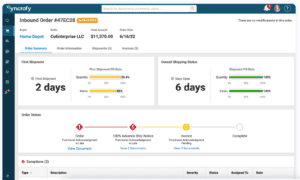
You would have to be living under a rock to not see that everything is subscription based nowadays. I even see it on FB with my boomer cousins, complaining about MS Office moving to subscriptions. It’s not going away and CDs are not coming back (yes, I have an Apple Music subscription). It’s no different in the B2B world. So how do you evolve and keep up with your competitors? For starters, get rid of that clunky old unsupported EDI software (yes, Gentran users, I am talking to you). Secondly, start thinking about where you could be spending your time if you did not have to babysit your EDI server. How about that backlog of new partners waiting to onboard? What about those mapping and comm changes because your largest partner has migrated to a new ERP system? Don’t forget the five days of testing. Let’s delve into all the ways moving to cloud-based EDI may benefit your organization.
But We’ve Always Done EDI this Way
What I hear often when meeting with clients is that they have always had on-premise and why change anything? Oh the possibilities… The most common occurrence we find is what we like to call “changing of the guard.” So many companies have that one person who knows everything about EDI and ONLY that one person knows everything about their EDI. At least three of our clients this last year have completed huge integration projects due to this “changing of the guard” phenomenon. In all three instances, the guard, as it were, retired – and the replacement quickly became overwhelmed with filling such huge shoes. In all three cases, we moved all their B2B processes to our Managed Services and we are now their “EDI/B2B department.” Rather than trying to replace someone who was virtually irreplaceable, use this as an opportunity to reinvent the role and develop a strategic framework around your B2B program. Just a few ideas off the top of my head include:
- Developing documentation
- EDI onboarding
- Supply chain metrics
- Improving partner relations
Letting Go is Tough
We get it, EDI has always been your baby and it’s really hard to let go of that control. That’s where a good cost/benefit analysis comes in. Certainly, there are instances where keeping your B2B processing in-house makes sense. We have a few clients that will always have EDI in-house and we agree that it’s a good strategy for them – either due to particular security requirements (especially PII) or clustered environments for high availability or disaster recovery (millions of transactions per day). In these cases, we are happy to provide backup for training, server migrations or helping with backlog of map development. These situations are for very large enterprise level, high security organizations, or organizations that utilize EDI to handle volumes of intra-company transactions as well. By and large, most companies (mid-range up to $500M) would benefit from using a reputable B2B company for Managed EDI Services.
Immediate benefits include:
- 24/7 monitoring
- Exception handling
- Best practices in mapping and communication
- Real-time API integration (waiting for batches is so 2005)
- Best of breed hardware
- Any-to-any translation software.
Long term benefits of cloud-based EDI include:
- improved partner relations
- Reduced chargebacks
- Increased ROI year over year on B2B investment
- Enhanced visibility of actionable data (beyond a VAN UI)
What About Supply Chain Visibility?
One of our more brand-recognized clients is in the process of identifying opportunities to move their partners from a VAN connection to AS2. This is arguably a great move as not only is it more secure, it will also reduce one more touch point in the process, putting us in a bit more control of their data. Their only reluctance is they know they will lose access to the VAN UI. This is where our B2B visibility tool, Syncrofy, takes over. Unlike a VAN user interface, Syncrofy allows for real-time visibility into your B2B processes not by kilo characters or even 850s but by actual business documents. Does your Sales Team need to know if those orders from Home Depot arrived – check out the human readable dashboard in figure 1 below. Are you looking for the ASN that goes with it? You’ll find that in the order lifecycle/timeline feature. Maybe your CFO wants to know how many chargebacks you had due to late shipments in the last quarter. You can pull that data too. You are really only limited by your own imagination. And if you have that techy guy in IT who wants to view the raw EDI data, it’s all there. Syncrofy is 100% cloud-based so there is no software or hardware to maintain and yes, it’s a subscription, and we can add it to virtually any EDI solution on the market today. See paragraph one.

Where Do I Sign Up for this Cloud-Based EDI?
Slow down bruh. The first step is to meet with one of our Account Executives to go over your current processes and what you’re trying to accomplish. We’ll do a no-obligation assessment and offer you our recommendations. Our goal at GraceBlood is to always look at your business rules and requirements FIRST and use cutting edge technology to help you achieve them. We’ll not only ensure that data flows to and from your customers and/or suppliers, we’ll also go a step further and ensure that it is consumed by your back-end system – what we call “the last mile.” This is where we outperform our competitors. Our team of EDI consultants and integration architects have over 200 years of collective experience constructing B2B and cloud-based EDI solutions for companies of all sizes and integrating seamlessly with select ERP systems. We’re not just an EDI company – we are B2B integration specialists.
Check out this case study to see how Retractable Technologies embraced Cloud-Based EDI + Supply Chain Visibility.








